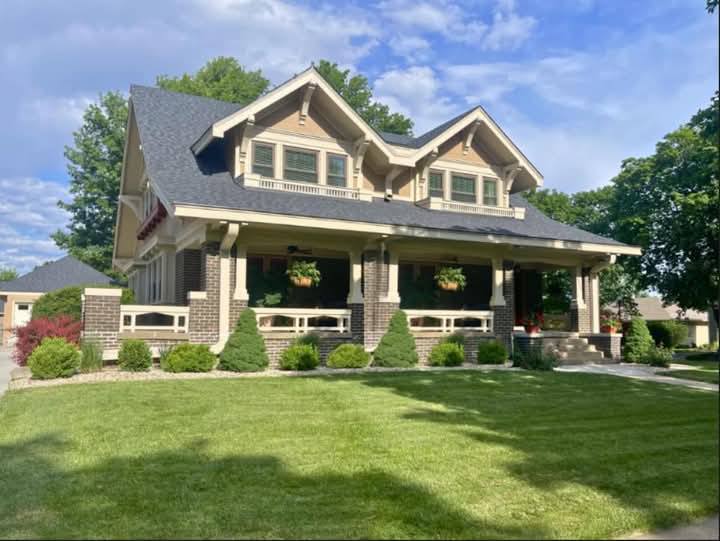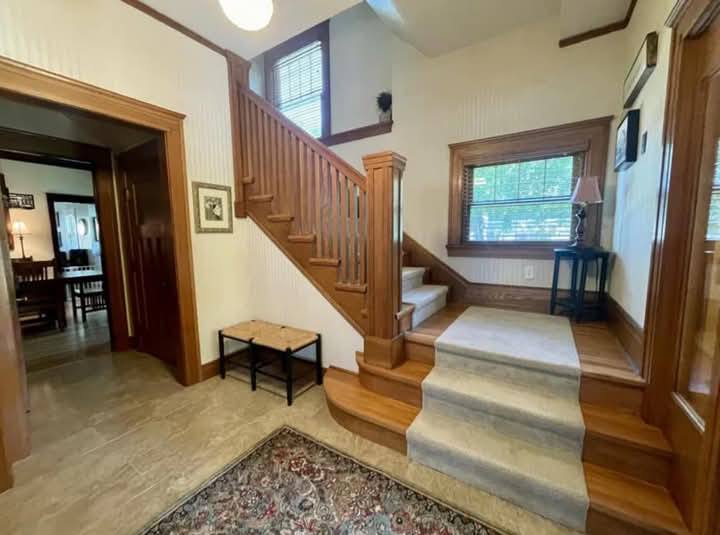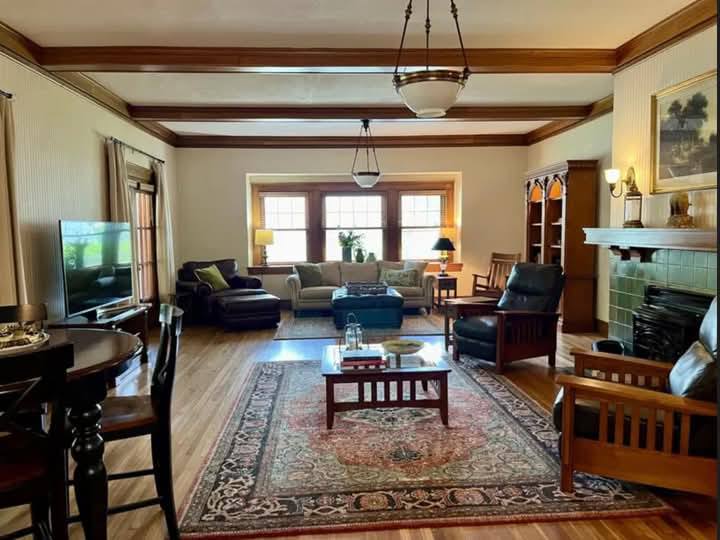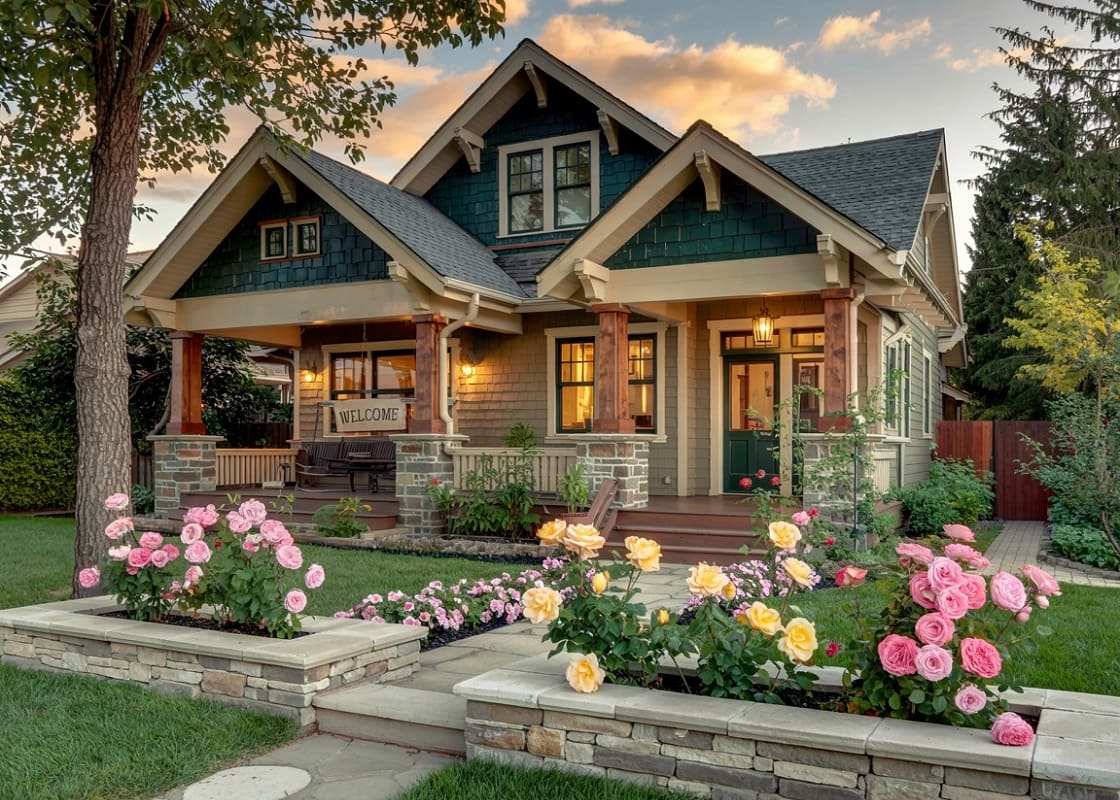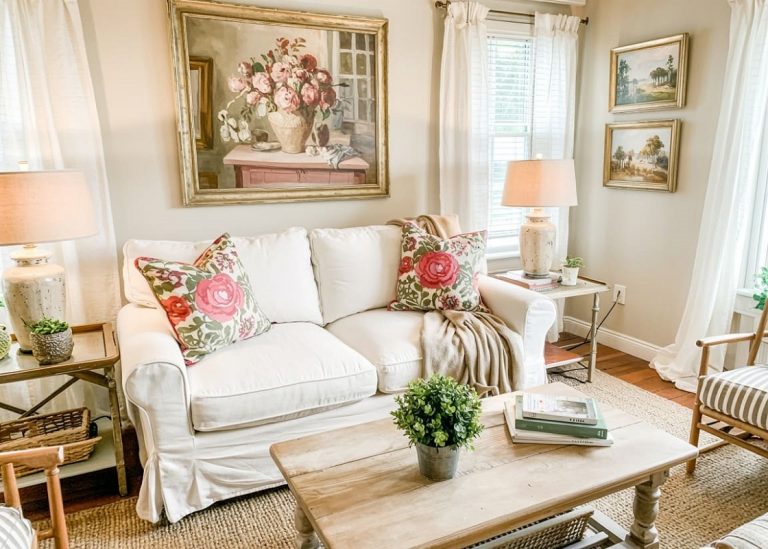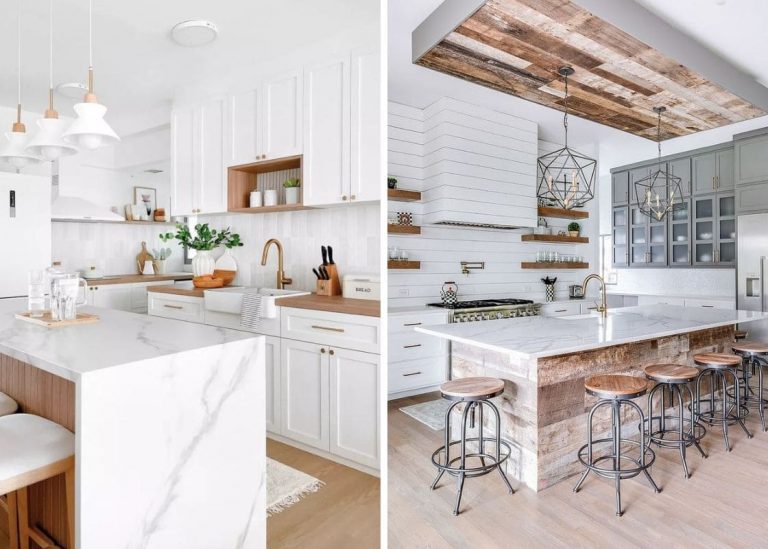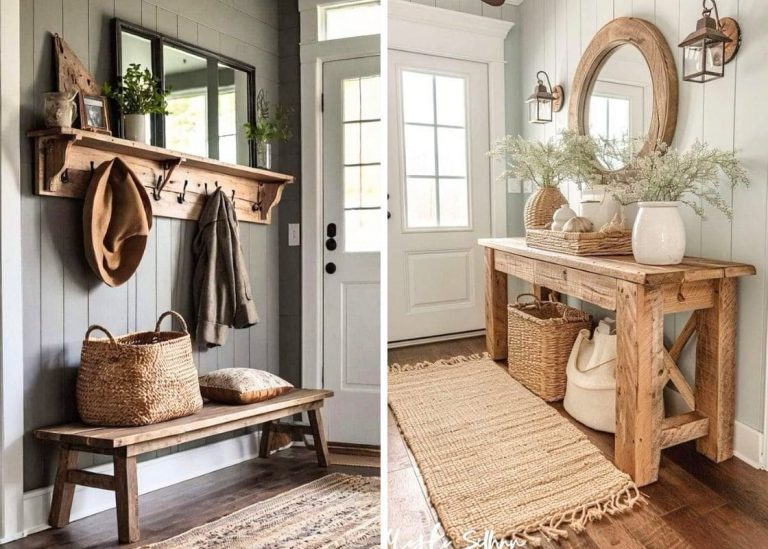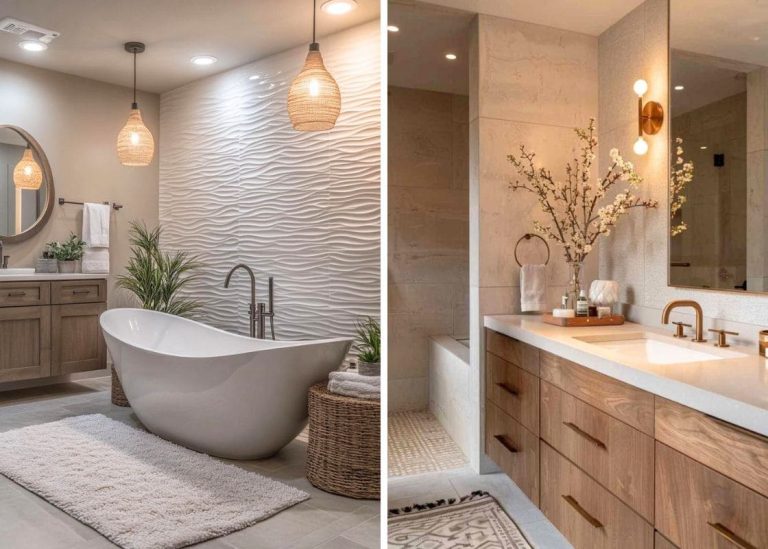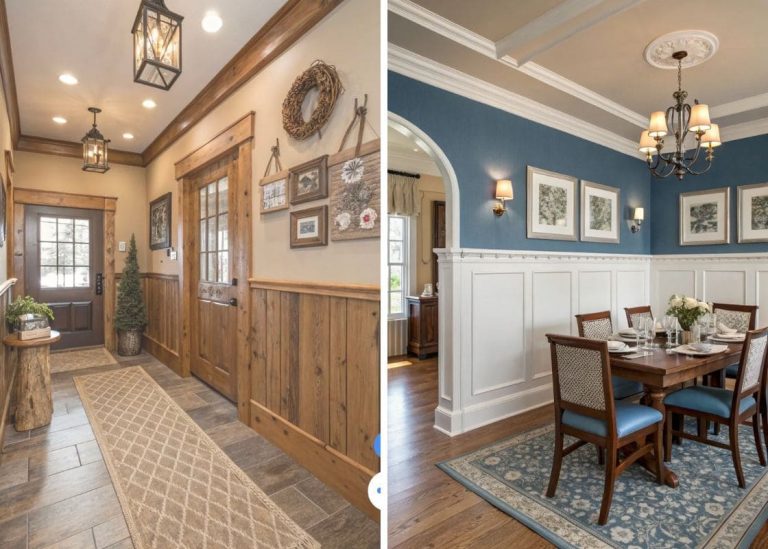Craftsman Style Home: Timeless Charm and Thoughtful Design
We were on a family road trip through a small historic town—one of those sleepy neighborhoods where every house felt like a story waiting to be told. I remember it vividly: the kids were half-asleep in the back seat, the sun was dropping low behind tall pines, and I spotted it. A Craftsman bungalow tucked beneath the trees, its wide porch wrapped in wood and warmth, glowing with the soft flicker of amber light.
There wasn’t anything flashy about it. No towering peaks, no showy glass or chrome. Just rich wood trim, a solid front door with small square windows, and porch columns that looked like they had stories carved into them.
I don’t know what it was about that house, but I couldn’t stop thinking about it. That evening, I sat with my journal in the hotel room and scribbled “Craftsman-style = home that breathes.” I didn’t grow up in one, and I don’t live in one now, but something about that house felt like home in my bones.
Since then, I’ve been gently collecting photos, design tips, and details from real Craftsman homes—some owned by friends, others found online, and a few from readers who’ve sent me the loveliest notes about their wood-paneled kitchens and built-in bookcases. This post is a love letter to those homes. A tour, a guide, and a cozy moment shared between you and me. Ready to step inside one of the most soul-soothing styles out there? Let’s take a walk together.
What Makes a Craftsman a Craftsman?
There’s a certain honesty in Craftsman design—an appreciation for things made by hand, for materials that show their age gracefully, and for homes that feel grounded in both time and place. Originally born from the Arts and Crafts movement in the late 19th century, this style became a gentle rebellion against the mass-produced, over-ornate designs of the era.
What I love most? It feels deeply human. Every detail is thoughtful, from the thick baseboards to the built-in benches that invite you to linger with a cup of tea.
Core elements of a Craftsman home often include:
-
A low-pitched, gabled roof
-
Wide eaves with exposed rafters
-
Covered porches with thick, tapered columns
-
Earth-toned exteriors in wood, stone, or stucco
-
Built-in shelving, window seats, and fireplace nooks
-
Warm wood trim, usually oak, cherry, or walnut
-
Stained glass, handcrafted tiles, and simple ironwork accents
There’s nothing sterile or “showroom” about these homes. Instead, they whisper, “Come in. Sit down. Stay awhile.”
A Front Porch That Greets You Like an Old Friend
This 1912 Craftsman style home, located in Hiawatha,KS, has been meticulously restored with subtle modern touches. These pictures don’t do this magnificent home justice.
Imagine walking up to this home with me. This is the kind of porch that makes you want to sit down with a cup of coffee and wave at your neighbors. The chunky columns, stone bases, and open rafters—classic Craftsman. Everything is low-slung and grounded, with a warm color palette that hugs you the second you step up. When I visited this home, I couldn’t resist sinking into that chair for a moment. It felt like it had stories to tell.
Windows That Whisper “Welcome”
Craftsman windows are like eyes with character—they’re wide, gridded, and framed in bold trim that makes every room feel snug and special. These particular windows had the softest light filtering through in the afternoon, catching the grain in the wood siding just right. One of the things I love most about Craftsman homes is how they honor natural light. It’s not just about brightness—it’s about warmth.
Built-In Beauty and Soulful Interiors
Step inside, and the heart of Craftsman style really starts to glow. Built-ins like these—bookcases, window seats, benches—aren’t just functional, they’re personal. They make a room feel like it grew with you. The first time I walked into this living room, I immediately imagined curling up with a good novel and a chunky knit throw. That warm-toned wood? It’s like a hug in architectural form.
A Kitchen That Feels Handcrafted
Craftsman kitchens are all about honesty. No high-gloss surfaces or flashy marble—just natural wood, thoughtful details, and timeless finishes. This one had me swooning over the cabinetry grain and old-school drawer pulls. I met the homeowner while visiting, and she told me the cabinets were handmade by a local carpenter—how fitting is that? Every drawer felt like it had a little history tucked inside.
Even the Details Tell a Story
This door—solid, honest, and beautifully detailed—is one of those little things that gives a Craftsman home its soul. The weight of it, the grain of the wood, the substantial trim…it all feels intentional. Nothing is fake or flimsy. I pressed my palm against the panel and could almost feel the craftsmanship pulsing through it.
Thinking of Going Craftsman? Here Are My Favorite Tips & Heartfelt Notes
If you’ve been dreaming about bringing Craftsman charm into your own home—whether through a full renovation or just a few subtle changes—here are a few notes I’d love to pass along. These come from my own experience designing, observing, collecting inspiration, and chatting with homeowners who live and breathe this style.
1. Start with the Materials, Not the Trends
Craftsman design is rooted in natural, honest materials. That means real wood, stone, metal, glass—not look-alikes or ultra-polished finishes. Even if you’re on a budget, try to source secondhand or reclaimed pieces. They’ll age beautifully and tell a richer story.
2. Warm Lighting Makes All the Difference
Swap out harsh white bulbs for warm, amber-toned lighting. Glass sconces, lantern-style fixtures, and even stained glass lamp shades can make the room feel instantly more inviting.
3. Built-In Doesn’t Mean You Have to Build From Scratch
Can’t afford custom millwork? You can fake a Craftsman feel with freestanding pieces that mimic the look—like wooden benches, shelves with corbels, or a standalone buffet in the dining room with glass doors and warm finishes.
4. Mix Function with Beauty
Everything in a Craftsman home tends to serve a purpose and look good doing it. Choose furniture that’s sturdy, handcrafted, and timeless. Avoid pieces that feel overly modern, too sleek, or disposable.
5. Use Color Sparingly—but Softly
The typical Craftsman palette includes earthy greens, rich browns, rusts, muted golds, and deep blues. You don’t need to splash color everywhere. Even one accent wall, throw pillow, or tile detail in these hues can warm up a neutral room.
6. Let the Architecture Shine
If your home already has wood trim, exposed beams, or original paneling—highlight it, don’t cover it. Use matte finishes or gentle stains to protect and enhance natural features instead of hiding them behind paint.
7. Embrace Imperfection
This style isn’t about perfection—it’s about soul. Scratches on a wood table? Patina on brass handles? Small chips in old tile? These are the things that give your home character. Let them stay.
Final Thoughts: Why We Still Love Craftsman Style
Craftsman homes remind us that thoughtful design never goes out of style. In a world where so much is fast and mass-produced, these homes slow us down. They tell us to pay attention to the wood grain, the hand-carved corbels, the way light moves across a room.
If you’re dreaming of a home with warmth, character, and soul—Craftsman style is a beautiful place to begin. Whether you’re building new or restoring old, it’s a style that feels like it was made just for you.
Thanks for coming along on this cozy little house tour with me! Let me know if you’ve ever lived in (or loved) a Craftsman home—I’d adore hearing your story.

